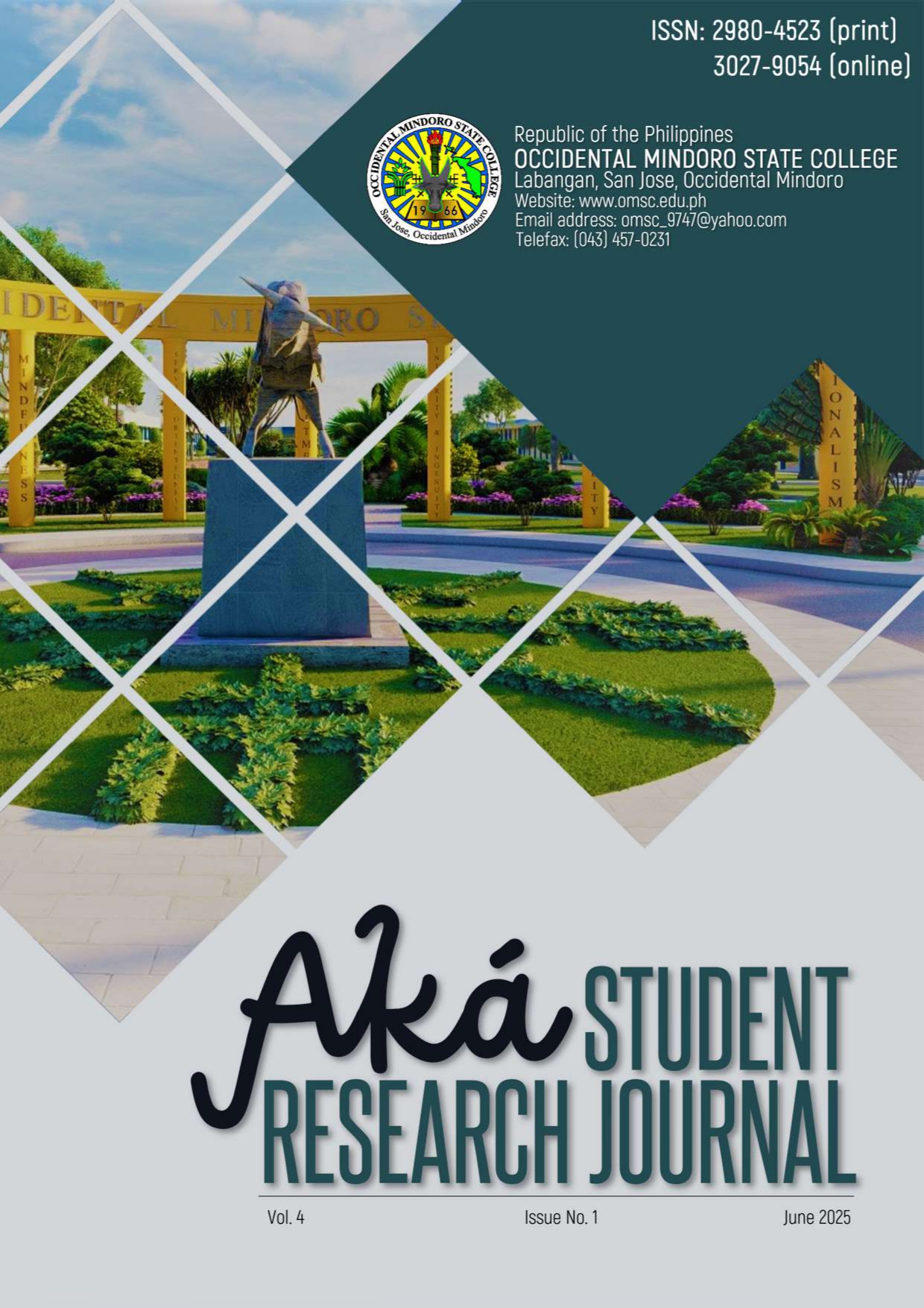Adolescents’ intention to engage in schistosomiasis preventive behaviors: An application of protection motivation theory in an endemic municipality in Oriental Mindoro
Keywords:
Adolescents, behavioral intention, endemic communities, protection motivation theory, schistosomiasisAbstract
In tropical and subtropical countries, schistosomiasis is a neglected tropical illness that typically affects impoverished rural communities, particularly those with agricultural and fishing populations. Victoria being one of the endemic Municipalities in Oriental Mindoro, adolescents are at risk of infection due to their cognitive and physical development stage. This study investigated adolescents' intention to engage in schistosomiasis preventive behaviors in endemic communities of Victoria, Oriental Mindoro, Philippines, using the Protection Motivation Theory (PMT). A descriptive correlational design was employed among 338 adolescents aged 12-19 from 13 barangays. Results indicated a low level of schistosomiasis knowledge among adolescents, with 78.7%. However, they demonstrated a "likely" intention to adopt protective measures in both short-term (3.75±1.14) and long-term (3.81±1.16) scenarios. Adolescents perceived high severity (3.47±0.96) and vulnerability (3.55±1.06) to schistosomiasis, showing strong awareness of the threat. Intrinsic and extrinsic rewards, and response cost, presented neutral scores, suggesting mixed perceptions. Significant correlations were found between PMT constructs and behavioral intentions. Severity, vulnerability, response efficacy, and self-efficacy significantly correlated with both short-term and long-term intentions. The study highlights the need for targeted health education interventions, leveraging social media and healthcare providers, to enhance knowledge and translate awareness into consistent preventive behaviors among adolescents in schistosomiasis-endemic areas.
References
Anyolitho, M. K., Poels, K., Huyse, T., Tumusiime, J., Mugabi, F., Tolo, C. U., Masquillier, C., & Nyakato, V. N. (2022). Knowledge, attitudes, and practices regarding schistosomiasis infection and prevention: A mixed-methods study among endemic communities of western Uganda. PLoS Neglected Tropical Diseases, 16(2), e0010190. https://doi.org/10.1371/journal.pntd.0010190
Assefa, A., Erko, B., Gundersen, S. G., Medhin, G., & Berhe, N. (2021). Low awareness and common misconceptions about schistosomiasis in endemic lowland areas in Western Ethiopia: a mixed-methods study. BMC Public Health, 21(1). https://doi.org/10.1186/s12889-021-11106-y
Bottemanne, H., & Friston, K. J. (2021). An active inference account of protective behaviours during the COVID-19 pandemic. Cognitive Affective & Behavioral Neuroscience, 21(6), 1117–1129. https://doi.org/10.3758/s13415-021-00947-0
Floyd, D. L., Prentice‐dunn, S., & Rogers, R. W. (2000). A Meta‐Analysis of Research on Protection Motivation Theory. Journal of Applied Social Psychology, 30(2), 407–429. https://doi.org/10.1111/j.1559-1816.2000.tb02323.x
Hambury, S. D., Grobler, A. D., & Melariri, P. E. (2021). Knowledge, Attitudes, and Practices on Urinary Schistosomiasis among Primary Schoolchildren in Nelson Mandela Bay, South Africa. Journal of Parasitology Research, 2021, 1–12. https://doi.org/10.1155/2021/6774434
Klohe, K., Koudou, B. G., Fenwick, A., Fleming, F., Garba, A., Gouvras, A., Harding-Esch, E. M., Knopp, S., Molyneux, D., D’Souza, S., Utzinger, J., Vounatsou, P., Waltz, J., Zhang, Y., & Rollinson, D. (2021). A systematic literature review of schistosomiasis in urban and peri-urban settings. PLoS Neglected Tropical Diseases, 15(2), e0008995. https://doi.org/10.1371/journal.pntd.0008995
Lund, A. J., Sokolow, S. H., Jones, I. J., Wood, C. L., Ali, S., Chamberlin, A., Sy, A. B., Sam, M. M., Jouanard, N., Schacht, A., Senghor, S., Fall, A., Ndione, R., Riveau, G., De Leo, G. A., & López-Carr, D. (2021). Exposure, hazard, and vulnerability all contribute to Schistosoma haematobium re-infection in northern Senegal. PLoS Neglected Tropical Diseases, 15(10), e0009806. https://doi.org/10.1371/journal.pntd.0009806
Lwin, M. O., & Saw, S. (2007). Protecting Children from Myopia: A PMT Perspective for Improving Health Marketing Communications. Journal of Health Communication, 12(3), 251–268. https://doi.org/10.1080/10810730701266299
Marikyan, D., & Papagiannidis, S. (2023). Protection Motivation Theory: A review. In S. Papagiannidis (Ed.), TheoryHub Book: This handbook is based on the online theory resource: TheoryHub (pp. 78-93) https://open.ncl.ac.uk/theory-library/TheoryHubBook.pdf
Musuva, R. M., Awiti, A., Omedo, M., Ogutu, M., Secor, W. E., Montgomery, S. P., Alaii, J., & Mwinzi, P. N. M. (2014). Community Knowledge, Attitudes and Practices on Schistosomiasis in Western Kenya-The SCORE Project. American Journal of Tropical Medicine and Hygiene, 90(4), 646–652. https://doi.org/10.4269/ajtmh.13-0488
Parisi, S., Mazigo, H. D., Kreibich, S., Puchner, K., Kasang, C., & Mueller, A. (2019). Factors associated with relevant knowledge of intestinal schistosomiasis and intention to participate in treatment campaigns: a cross sectional survey among school children at Ijinga Island on Lake Victoria, North-Western Tanzania. BMC Public Health, 19(1). https://doi.org/10.1186/s12889-019-8091-4
Xiao, H., Li, S., Chen, X., Yu, B., Gao, M., Yan, H., & Okafor, C. N. (2014). Protection Motivation Theory in Predicting Intention to Engage in Protective Behaviors against Schistosomiasis among Middle School Students in Rural China. PLoS Neglected Tropical Diseases, 8(10), e3246. https://doi.org/10.1371/journal.pntd.0003246
Xiao, H., Peng, M., Yan, H., Gao, M., Li, J., Yu, B., Wu, H., & Li, S. (2016a). An instrument based on protection motivation theory to predict Chinese adolescents’ intention to engage in protective behaviors against schistosomiasis. Global Health Research and Policy, 1(1). https://doi.org/10.1186/s41256-016-0015-6
Zhang, K. (2019). Bridging the gap on schistosomiasis: A cross-sectional study examining the knowledge gap and common attitudes and practices regarding S. mansoni infections among varying education levels in Luanda K’Otieno, western Kenya. SIT Digital Collections. https://digitalcollections.sit.edu/isp_collection/3129/

Downloads
Published
Issue
Section
License
Copyright (c) 2025 Jeanne A. Espiritu, Marites L. Gawad, Jenny B. Adriatico, Alona D. FLores, Ara-Mae T. Gozar, Marilyn M. Adion, Sarah Jane M. Paguagan, Arnold Jann L. Cariaso (Author)

This work is licensed under a Creative Commons Attribution-NonCommercial 4.0 International License.

